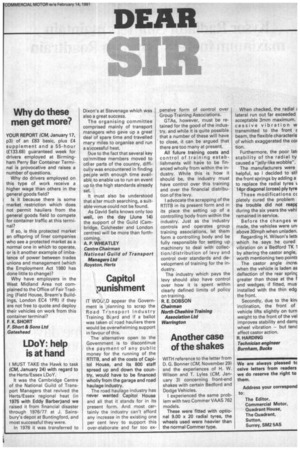Another case of the shakes WITH reference to the letter
Page 29

If you've noticed an error in this article please click here to report it so we can fix it.
from D. G. Bonner (CM, November 29) and the experiences of H. W. Wilson and T. Lyles (CM, January 3) concerning front-end shakes with certain Bedford and Dodge Vehicles.
I experienced the same problem with two Commer VAAS 762 models.
These were "fitted with optional 9.00 x 20 radial tyres, the wheels used were heavier than the normal Commer type.
When checked, the radial lateral run out far exceeded acceptable 3mm maximum. cessive vibration w transmitted to the front beam, the flexible characteris of which exaggerated the cor tion.
Furthermore, the poor 'at: stability of the radial ty caused a "jelly-like wobble".
The manufacturers were helpful, so I decided to stil the front springs by adding a to replace the radial tyres % 14pr diagonal (cross) ply tyre These modifications cc pletely cured the problem the trouble did not reapr during the six years the vehi remained in service.
Before the changes w made, the vehicles were un: above 30mph when unladen.
Regarding H. Wilson's lett( which he says he cured vibration on a Bedford TK 1 by altering the castor angle, worth mentioning two points
The castor angle increi when the vehicle is laden as deflection of the rear sprinc greater than those at the f and wedges, if fitted, mus. installed with the thin edg the front.
Secondly, due to the kin: inclination, the front of vehicle lifts slightly on turn weight to the front of the vel improves stability and damr wheel vibration — but tend affect castor action.
R. HARDING
Technician engineer Burnham, Bucks








































































































